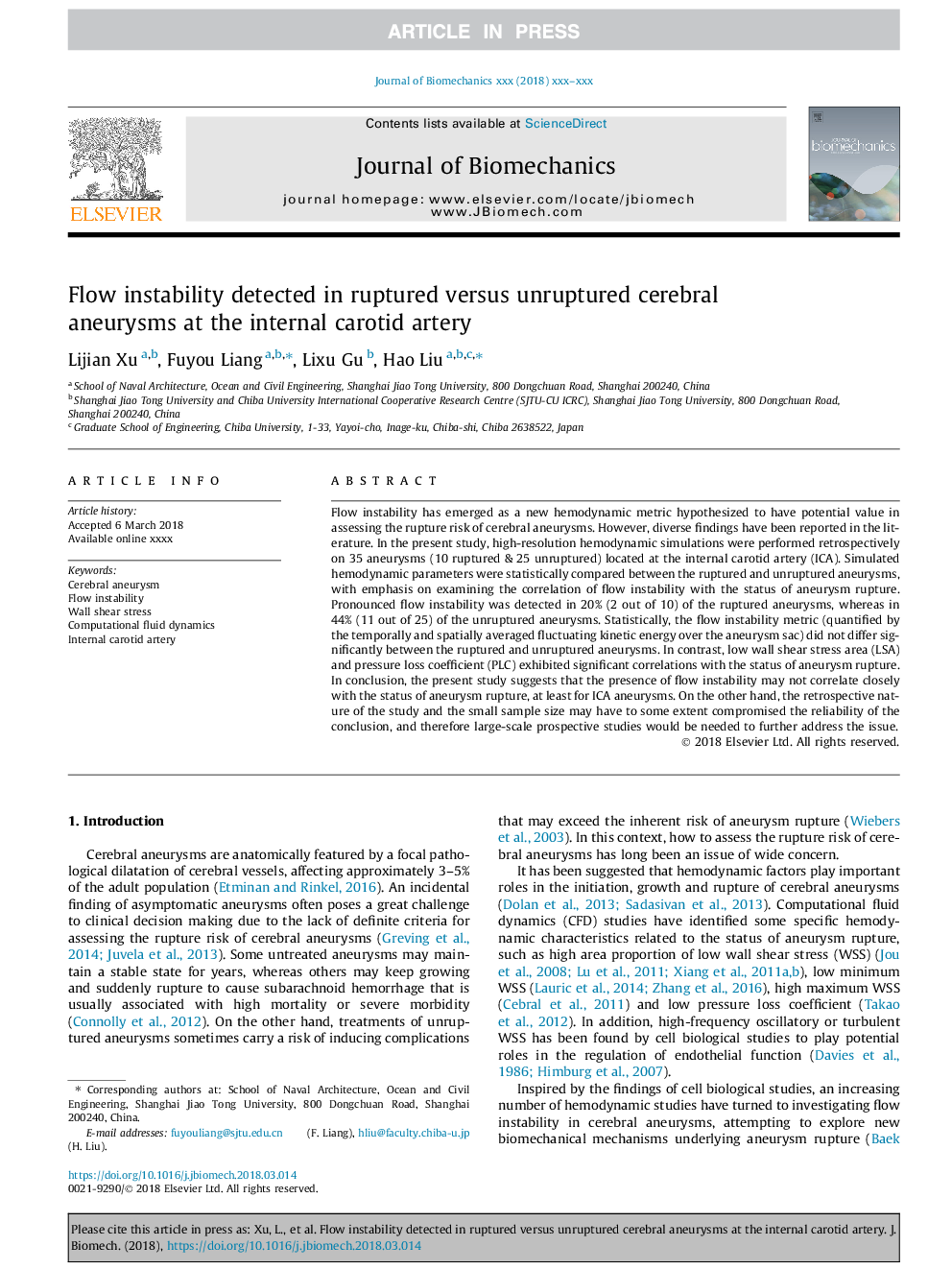| Article ID | Journal | Published Year | Pages | File Type |
|---|---|---|---|---|
| 7236342 | Journal of Biomechanics | 2018 | 13 Pages |
Abstract
Flow instability has emerged as a new hemodynamic metric hypothesized to have potential value in assessing the rupture risk of cerebral aneurysms. However, diverse findings have been reported in the literature. In the present study, high-resolution hemodynamic simulations were performed retrospectively on 35 aneurysms (10 ruptured & 25 unruptured) located at the internal carotid artery (ICA). Simulated hemodynamic parameters were statistically compared between the ruptured and unruptured aneurysms, with emphasis on examining the correlation of flow instability with the status of aneurysm rupture. Pronounced flow instability was detected in 20% (2 out of 10) of the ruptured aneurysms, whereas in 44% (11 out of 25) of the unruptured aneurysms. Statistically, the flow instability metric (quantified by the temporally and spatially averaged fluctuating kinetic energy over the aneurysm sac) did not differ significantly between the ruptured and unruptured aneurysms. In contrast, low wall shear stress area (LSA) and pressure loss coefficient (PLC) exhibited significant correlations with the status of aneurysm rupture. In conclusion, the present study suggests that the presence of flow instability may not correlate closely with the status of aneurysm rupture, at least for ICA aneurysms. On the other hand, the retrospective nature of the study and the small sample size may have to some extent compromised the reliability of the conclusion, and therefore large-scale prospective studies would be needed to further address the issue.
Keywords
Related Topics
Physical Sciences and Engineering
Engineering
Biomedical Engineering
Authors
Lijian Xu, Fuyou Liang, Lixu Gu, Hao Liu,
